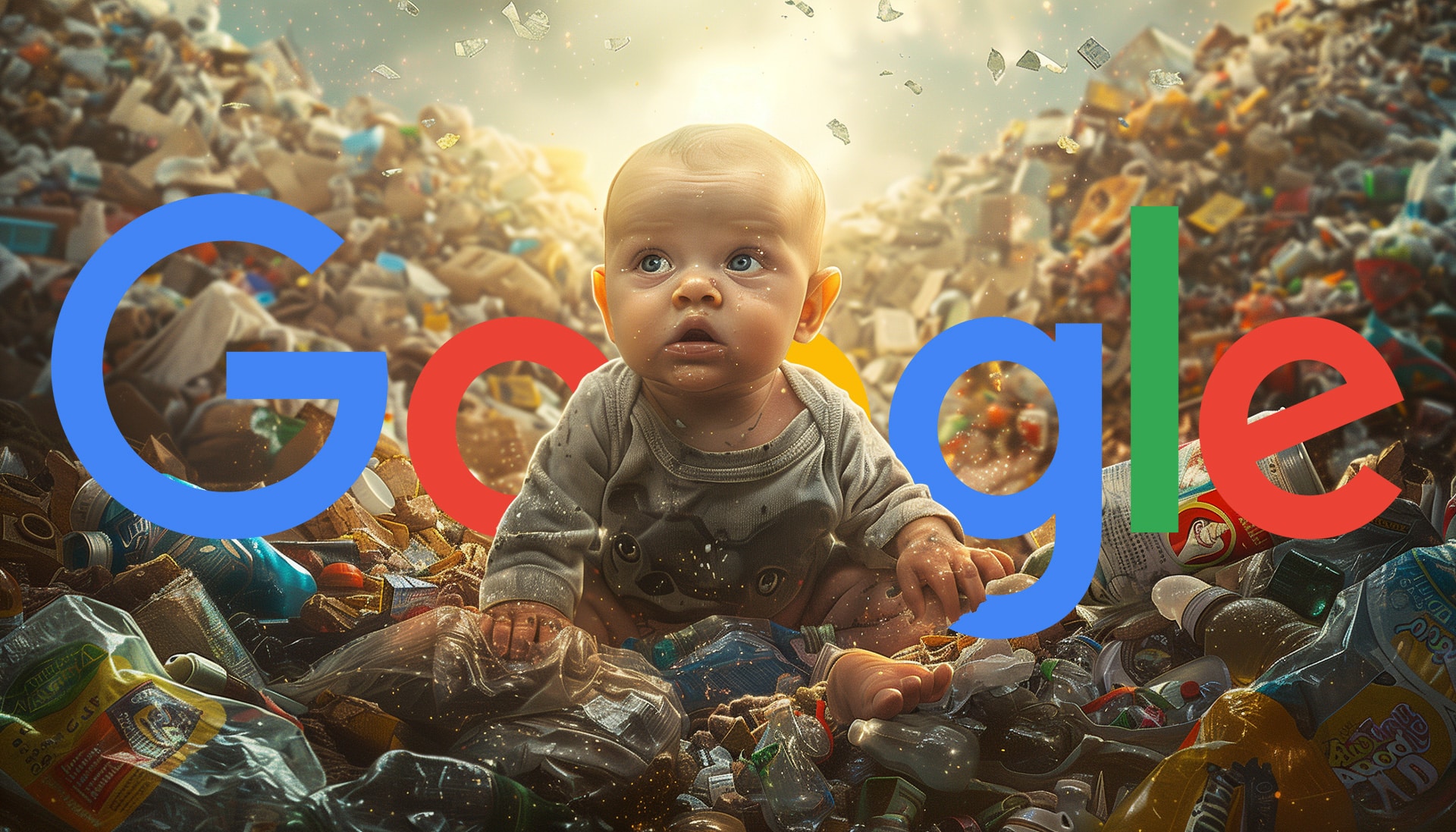Many people have an incredibly low bar for what they consider to be “great” content that deserves to rank in Google Search.
So often, I see people bemoaning the fact that their content is great and high-quality. They just can’t understand why it isn’t ranking. But inevitably, when I go look at that great content, it typically is, at best, subpar.
The problem is everyone creating subpar content (and website experiences) is blind to this reality. They all think their content is great and high quality.
But it isn’t. It just isn’t. They just can’t admit their content babies are ugly.
Truly great content is rare.
It’s not about whether it was generated by AI or human. AI tools can write crap. But humans have been mastering the art and science of mediocre content creation for far longer.
The web is full of generic content. Just because you think it’s high-quality content doesn’t mean that people – or Google – will.
Google, the cesspool and brands
The web is a cesspool. That’s how former Google CEO Eric Schmidt put it in 2008.
And Google – despite its best efforts, all these years later, still hasn’t really figured it out.
Google’s solution was brands. Which is why you’re seeing so many complaints lately (none of which are actually new, though they may be new to you) about:
Who’s to blame for Google’s Search quality?
There is an endless circular argument to be made here – it’s almost the case of which came first, the chicken or the egg.
Content came first. Then Google. But now Google is a Search monopoly that can send lots of incredibly valuable search traffic – or barely any or none. SEO can be very much feast or famine.
Google, for its part, absolutely bears part of the blame. (If you haven’t read A.J. Kohn’s brilliant piece, It’s Goog Enough! I highly suggest reading it for a full teardown of some of the huge problems with Google’s search experience.) Google also indirectly feeds this problem, as websites can easily monetize content through advertising programs like Google’s AdSense.
So people essentially copy or mimic the type of mediocre content Google ranks for a given query in the hopes of outranking whatever is ranking – which often isn’t that great anyway.
Multiply on a massive scale and you’ve got steaming trash piles of content that Google now has to make sense of and rank.
So Google does Google and reverts to what it knows: when in doubt, rank content from a brand.
But what about the content creators? They also bear part of the blame.
In 2022, before ChatGPT and generative AI became available to anyone and everyone to flood the web with even more low-quality and spammy content, we published Is Google Search getting worse? Former Googler Marissa Mayer said she thought the “quality of the Internet has taken a hit”:
- “When you see the quality of your search results go down, it’s natural to blame Google and be like, ‘Why are they worse?’ To me, the more interesting and sophisticated thought is if you say, ‘Wait, but Google’s just a window onto the web. The real question is, why is the web getting worse?’”
And oh, by the way, Google search quality crises are not new. At all.
I won’t rehash it all since former Search Engine Land editor Danny Sullivan (now Google Search Liaison) did a great job of that in his 2017 article, A deep look at Google’s biggest-ever search quality crisis.
In addition to discussing the flood of fake news and dubious content at the time, it goes into the long history of Google’s other challenges of when Google’s Search results became the “worst ever” – including the rise of low-quality content farms ranking well in Search results that resulted in the Google Panda algorithm update nearly 13 years ago.
Let’s be real: Google and content creators can both take some blame here.
Meanwhile, Searchers lose.
How should Google rank mediocre content?
HouseFresh published an excellent tirade against Google two days ago, How Google is killing independent sites like ours. Today, I decided to look at some of the “high-quality content” HouseFresh is publishing – not to do a teardown of any SEO issues, just as a consumer of content and searcher of products.
My first article, picked at random, was titled 5 best air purifiers for cigarette smoke we have tested. Here’s how the review starts:

Is that high-quality content? Is that at all helpful? When is the actual review going to start?
That opening line is just painfully generically written. Talking about “one person smoking as they walk by” is how you kick off your product review? That’s your hook? Really?
Why do I need to read a bad book report before I get to the actual thing I came for – a review? This is the same type of approach to bland content that made so many people despise recipe blogs.
But turns out, this habit of generic writing isn’t at all unique to HouseFresh. Curious, I looked to see what content ranks in Google Search for [best air purifiers for cigarette smoke]? Here’s what I see:
Good Houseskeeping in position 1:
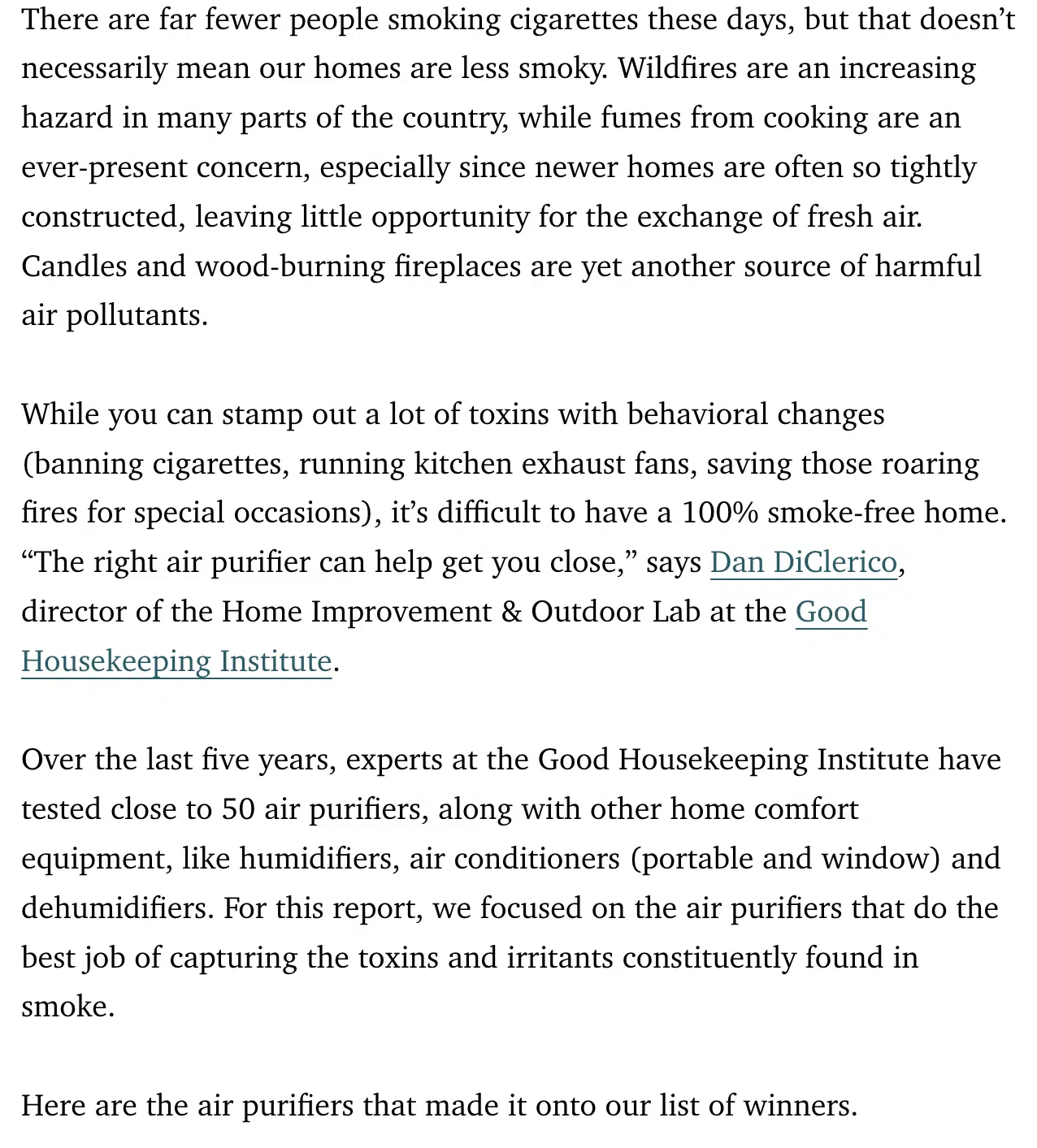

Compared to what else is ranking in the top 10 organic positions, this one appears to be the best. The intro could use some shortening (and the overall review could use some tightening up), but overall, it delivers a content experience. I’m not unhappy that this is in Position One.
Things go downhill from here.
Better Homes & Gardens in position 2:
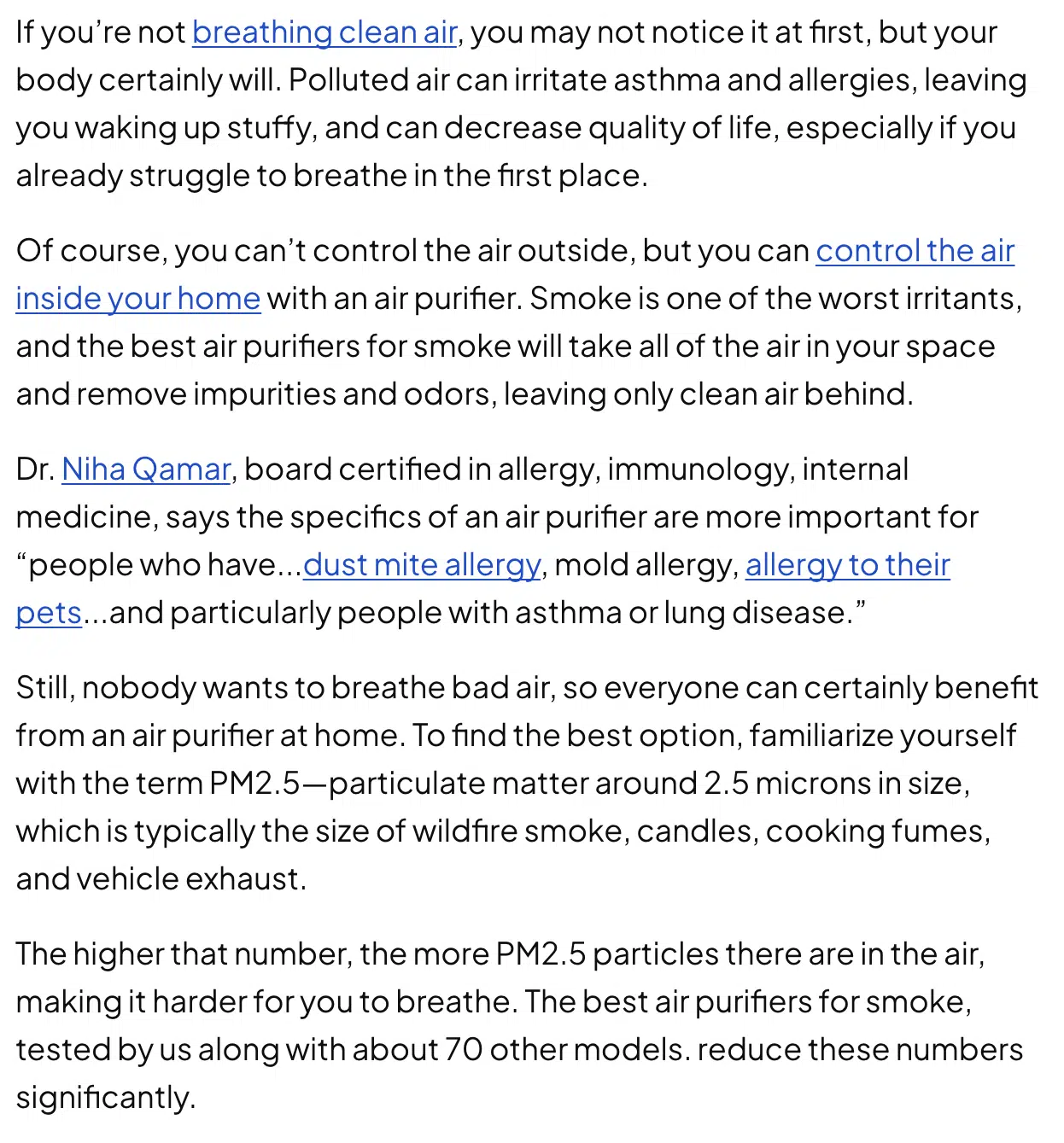

This isn’t bad or offensive, but it’s not particularly helpful to me, as a searcher who is in the mode of buying. I don’t need all this preamble. Can we please get to the point? I came for a review, not several non-essential generic paragraphs of text forcing me to scroll or just leave out of annoyance.
Of course, a Google SERP wouldn’t be complete without Forbes, an absolute respected authority on air purifiers (and nearly everything else under the sun, according to Google) in Position 7:
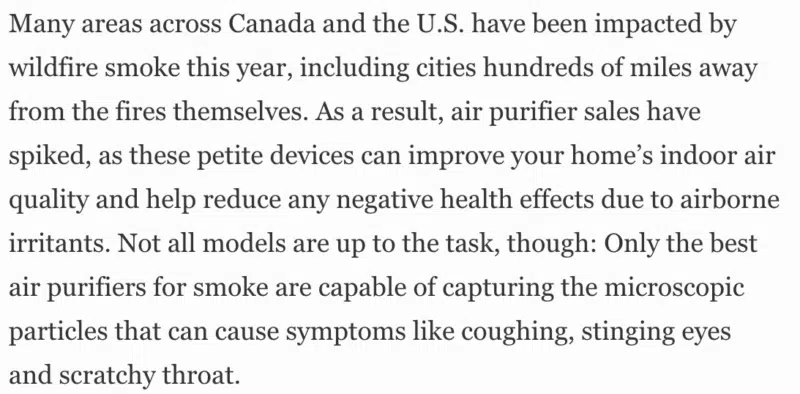

The intro doesn’t mention cigarette smoke – the one and only mention comes much later in the section explaining how they chose the best air purifiers (“It’s no secret that breathing in smoke, be it from wildfires or cigarettes…”).
(Fun aside, once upon a time, Forbes used to complain loudly about the unfairness of Google. Look at them now.)
And digging much deeper after some retail content (Amazon, Best Buy, etc.), you’ll find whatever the opposite of a hidden gem is from Blueair in Position 9, with painfully terrible content:


Just. Wow. So awful. Thanks for that irrelevant history lesson, I needed a nap.
Look, this is just one query. I could easily spend hours, finding examples across endless queries and industries. But we all know the results will be similar.
Google is a baby wading through a content trash heap
The featured image I used for this article is the best metaphor I could come up with – Google is a baby in a content landfill that’s run out of space.
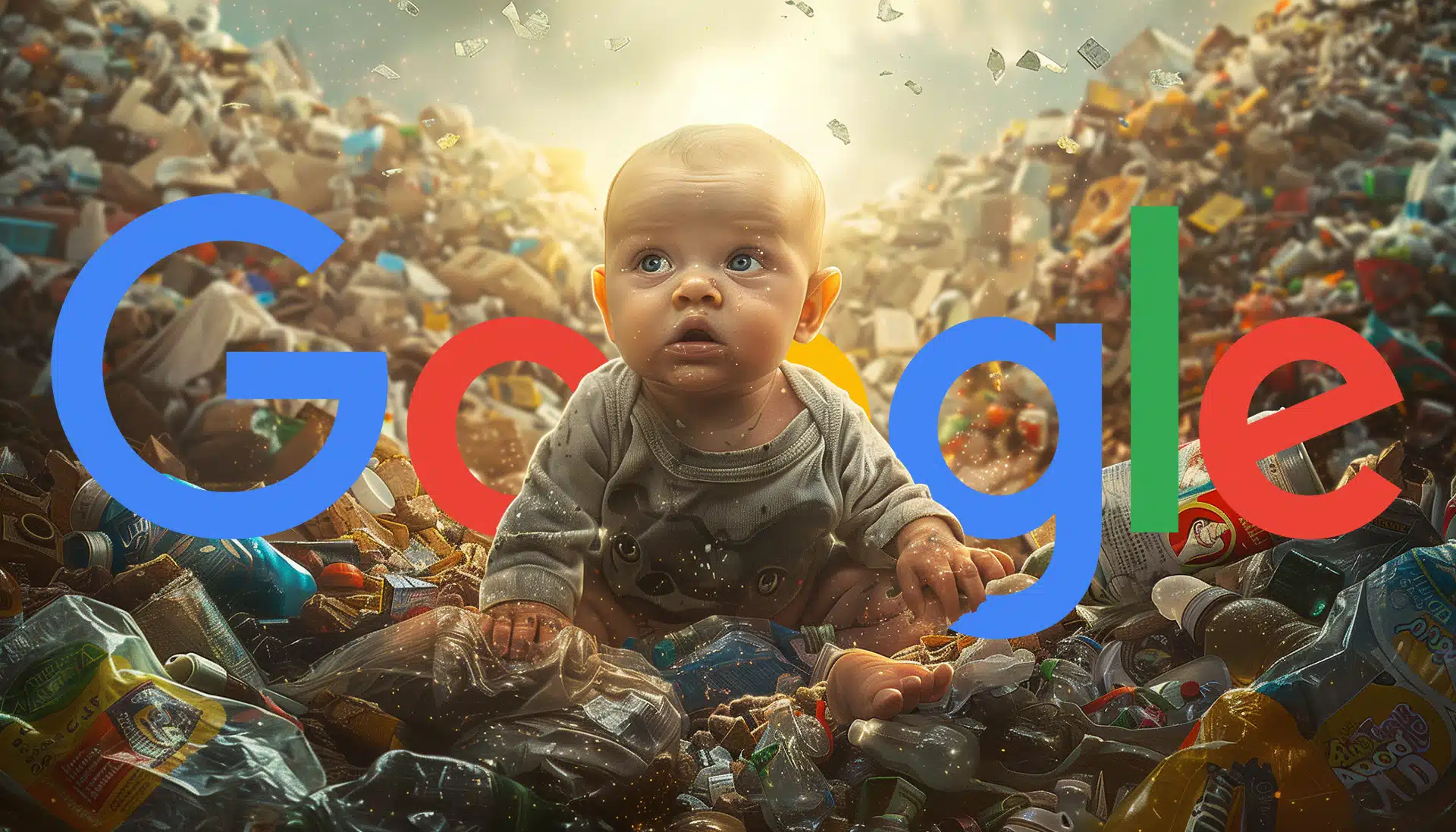

We seem stuck in a repeating cycle where people mimic sucky content, because it’s successful, and then expect it to rank because that’s what Google ranks, only to be annoyed when that content is unsuccessful.
To me, the solution is clear – though not easy:
Become a useful, credible brand. This is not a quick or easy process.
So continue to play the “long game” of SEO and don’t just hope Google will rank your content and complain when they don’t.
Create better content that is legitimately useful to people. Keep improving every aspect of your SEO.
Content creators need to improve. But so does Google.
For its part, Google has signaled that changes are coming. In November, Google advised us to “buckle up.” The company reiterated this in January. And again in February.
History tells me that when Google is faced with an onslaught of criticism about its Search quality, Google tends to respond. When that will be remains the big question.





